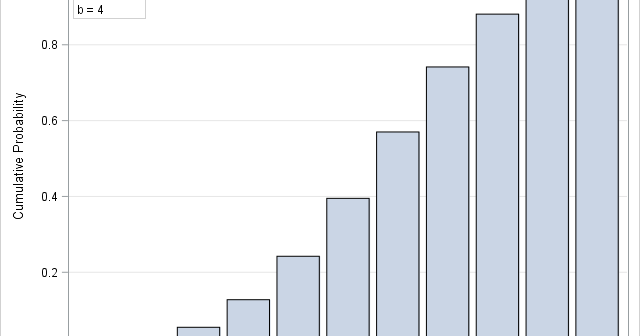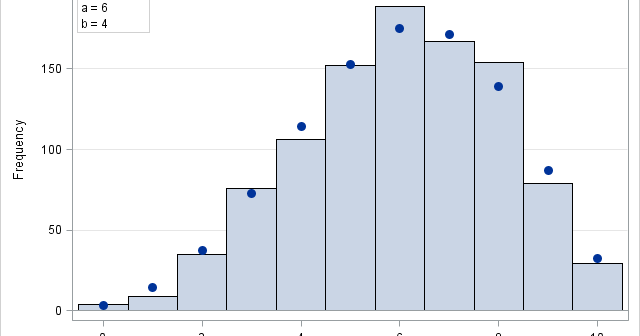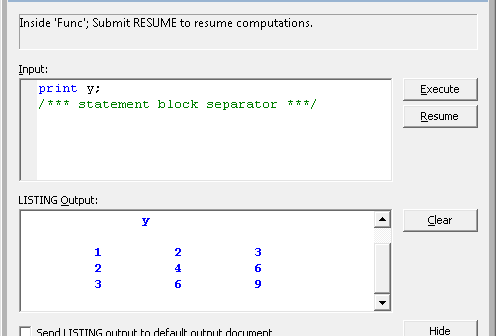The DO Loop
Statistical programming in SAS with an emphasis on SAS/IML programs
A statistical programmer read my article about the beta-binomial distribution and wanted to know how to compute the cumulative distribution (CDF) and the quantile function for this distribution. In general, if you know the PDF for a discrete distribution, you can also compute the CDF and quantile functions. This article

This article shows how to simulate beta-binomial data in SAS and how to compute the density function (PDF). The beta-binomial distribution is a discrete compound distribution. The "binomial" part of the name means that the discrete random variable X follows a binomial distribution with parameters N (number of trials) and

Did you know that a SAS/IML function can recover from a run-time error? You can specify how to handle run-time errors by using a programming technique that is similar to the modern "try-catch" technique, although the SAS/IML technique is an older implementation. Preventing errors versus handling errors In general, SAS/IML

Debugging is the bane of every programmer. SAS supports a DATA step debugger, but that debugger can't be used for debugging SAS/IML programs. In lieu of a formal debugger, many SAS/IML programmers resort to inserting multiple PRINT statements into a function definition. However, there is an easier way to query

A SAS programmer wanted to display a table in which the rows have different formats. An example is shown below. The programmer wanted columns that represent statistics and rows that represent variables. She wanted to display formats (such as DOLLAR) for some variables—but only for certain statistics. For example, the

Have you ever seen the "Fit Summary" table from PROC LOESS, as shown to the right? Or maybe you've seen the "Model Information" table that is displayed by some SAS analytical procedures? These tables provide brief interesting facts about a statistical procedure, hence they are called factoids. In SAS, a
